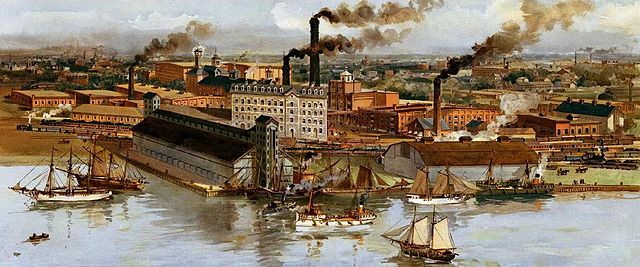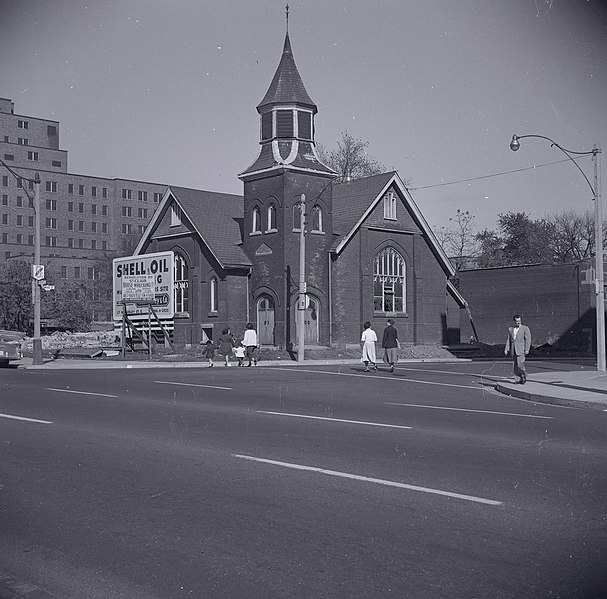By Ife Olusegun
Posted on August 26, 2021
This article contains discussions of enslavement.
Introduction
If you search “The History of Toronto” using your Google search engine, you’ll find a variety of information. Perhaps you’ll discover the genesis of the name “Toronto,” and how the name of the city we know and love has changed several times between the 17th to the 19th century—from Giyando, to York, to Little York and so on. Perhaps you will find information about early European settlements and the consequent erasure of the First Nations people that dwelled on this land before European contact. You might even come across information detailing the numerous wars over land possession between the British and the French, learn about people who had immigrated to Toronto seeking a different life, or even learn about the rapid population growth of Toronto throughout the 19th century. Despite the numerous topics you may come across, one of the topics that may not make the first few pages of your Google search are topics about the Black history of Toronto.

Artist A.H. Hider’s painting of Toronto (1896)
The 17th century (1600s) to the 19th century (1800s)
Starting from the beginning, the first recorded Black person to enter Canada was a man named Mathieu da Costa, who arrived in Nova Scotia in the year 1608, as an interpreter for the governor of Acadia. Da Costa was of Afro-Portuguese descent, a renowned explorer, and was the first Black man recorded to arrive in Canada from Europe; acting as a bridge for Europeans (Champlain and his men) to communicate with the Indigenous peoples of Canada. Enslavement of Black people was rampant in Canada, specifically in Ontario between the 17th and 18th centuries. Black people were enslaved and sold, then brought to Canada from various countries in Africa, England and the United States. Many governors and social leaders in established positions in the city of Toronto were known to be slave owners during this time.
In the year 1793, the Governor of Toronto, Governor Simcoe, started the movement to “gradually” abolish slavery in Ontario. His statement declared that no Black persons would be newly enslaved, and the children of enslaved people would only work as slaves until they were 25 years of age. That is to say, 1793 was the first time that Black people were acknowledged to be human and not property despite being enslaved. After the “Act Against Slavery” law was established, Eastern Canada began to see an influx of Black Americans who had been enslaved, and were fleeing the U.S. to seek refuge. Toronto recorded its first group of freed Black people in the year 1799, with 15 Black people living in the city as free persons. This number increased to 18 people, including six children, by the year 1802. Slavery was completely abolished all across Canada in 1833. By the mid-1850s, there were 1000 Black residents in the city of Toronto.
The immigration of Black Americans to Eastern Canada as a result of the end of the American Civil War in 1865 is just one aspect of the history of Black people in Toronto and Canada. Black Loyalists of the U.S., Jamaican Maroons, Refugees, and Black people looking for work all had a part to play in what we refer to today as Canadian Black History.
Achievements and resilience of the original Black peoples of Toronto
It is so incredible and inspiring to be able to learn about the victories and achievements that the early Black residents of Toronto were able to achieve, especially when considering their difficult and traumatic beginnings. Here are just a few examples of the many great achievements of the original Black peoples of Toronto:
- W.H. Edwards – 1839
- On what we now know today to be King Street, Edwards established and maintained a successful barber shop
- Mr. T.F. Carey, and Mr. R.B. Richards – 1840s
- These two gentlemen started the first ice houses of Toronto. Their ice pounds were drawn from mill ponds that were located towards the north of what we now know as Bloor Street.
- They expanded their business to include two more ice houses, a barbershop, and a bathhouse.
- A.T. Augusta – 1850s
- A.T. Augusta was a trained and renowned doctor, who opened up his own clinic – “Central Medical Hall” on Yonge and Elm Streets.
- M.O. Augusta – 1850s
- M.O. Augusta was one of the only known business women at the time – she owned and maintained a dry goods import store, and a dressmaking boutique.
- W.R. Abbott – 1850s
- Abbott, upon arriving in Toronto from the U.S., had no writing or reading skills. He did, however, have mathematical skills, and he was able to use that to gain quite an impressive fortune from real estate and the tobacco business!
In addition to these personal success stories, there are various other contributions to the city instilled by Black people, and which are still prevalent today. For example, the first Black-owned institution that was recognized by the city of Toronto was the First Baptist Church in 1826. This church served as a catalyst for the abolitionist movement, and the congregation held services offering aid to fugitives.

First Baptist Church (1956)
To Conclude
Black people are very much intertwined in the fabric of Canada and the Toronto region. It is evident that the history of Black people not only in Toronto, but in Canada, is one that is complicated, and can truly be painful to learn. However, there are also many positive aspects such as the resilience and determination of the original Black people of Toronto. These stories are a part of the foundation of our history, and must be acknowledged. If you would like to learn more about this topic, which I hope that you do, here are some trusted resources that you can look at:
- Black History in Early Toronto (students commission.ca)
- Black History in Toronto – City of Toronto
- Community Organizing by African Caribbean People in Toronto, Ontario (sagepub.com)

